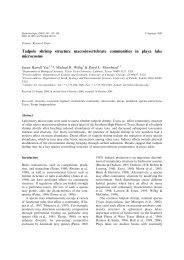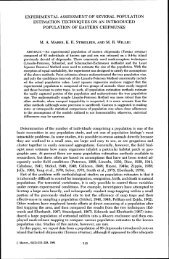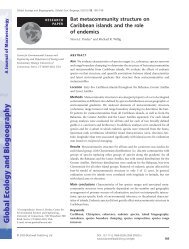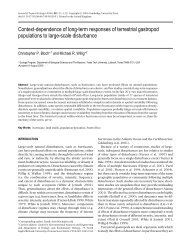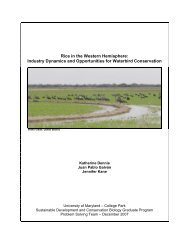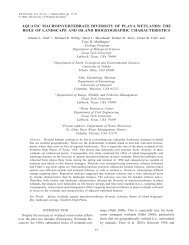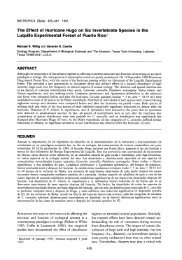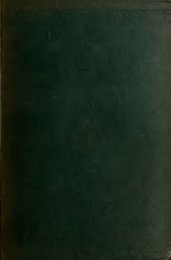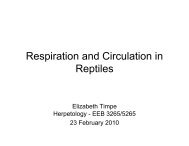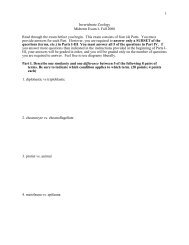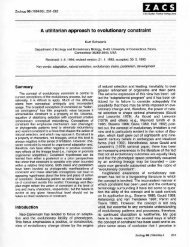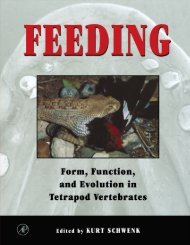The minimum equipment necessary to collect insects consists
The minimum equipment necessary to collect insects consists
The minimum equipment necessary to collect insects consists
You also want an ePaper? Increase the reach of your titles
YUMPU automatically turns print PDFs into web optimized ePapers that Google loves.
T2<br />
MOUNTING AND PRESERVING INSECTS<br />
<strong>The</strong>.implesl uay <strong>to</strong> pin an irrscct is <strong>to</strong> hold jt belween lhe thumb<br />
^"i io*H'"'g"i o'ne hind an.l irrsert the pin $.ith lhe other hand'<br />
AJJ specimens<br />
"i and labels Puf on a pln should bc at a unlrorm<br />
i;ehi; ihi. i" most easily accompliihed tith a pinning block<br />
,14r<br />
4v+<br />
)\/(<br />
c<br />
How <strong>insects</strong> are pinned. <strong>The</strong> black spots show the location of tle<br />
oin inilr" ."." o' Fies (A), beer les , B i bugs ' C grasshopper' rD),<br />
ilrasonfli.s and drmselBies (P), and leathopl,ers. lroghopperc, and<br />
-<br />
PlanthoPPers (F)<br />
Ag<br />
A<br />
"1vt<br />
4 i'N<br />
l\v\<br />
Prnninq blocls. <strong>The</strong>se mcy be made of a re' langrrlar pe'e.ol<br />
roodrA) orone shaped likeslPps(Bl, qilh holesdrllled <strong>to</strong> l "8'<br />
aJi,r-in.-AJGrpruiing a speciiren on a pin inse'r the pio in.rhe<br />
i-in. hole unril it rou.hes bot<strong>to</strong>nr <strong>The</strong> 56 in hole is used ro<br />
posirion the local;ly date Iabei on Ihe-pin. and the r8-rn nole ro<br />
positjon a serond label. Il there ls one'<br />
MOUNTINC AND IRESERVTNG TNSECTS<br />
Mount the insect about an inch up on the pin. With large-bodied<br />
<strong>insects</strong> there should be enough of the pin above the insect <strong>to</strong> permit<br />
easy [anonng,<br />
Sagging of the abdomen of a pinncd insect (liLc a dragonfly) can<br />
be prevented in the following ways: (1) by sticking the pinned<br />
specimen on<strong>to</strong> a vertical surface, rrith thc abdomcn hanging dorvn,<br />
and leaving it there until the abdomcn dries; or (2) by placing a<br />
srnali piece of carclboard on the pin, just under and supporting the<br />
insect, and leaving it there until the insect dries;or (3) by supporting<br />
the sagging abdomen with crossed pins, the abdomen resting<br />
in the angle \l'here the pins cross.<br />
A sheet of cork. balsa wood, or other soft material is useful for<br />
the temporary s<strong>to</strong>rage of pinned specimens until they can be sorted<br />
and placed in boxcs.<br />
Mounting Small Insects on Pins. Insects hard-bodied enough <strong>to</strong><br />
mount dry but <strong>to</strong>o srnall <strong>to</strong> pin are usually mounted on "points."<br />
Points are small triangular pieces of cardboard, about 8 mm. long<br />
and 3 or 4 mm. wide at the base; the pin is put through the base<br />
of the point and the insect is glued <strong>to</strong> the tip. Points can be cut<br />
with scissors or punched out with a special punch (obtainable from<br />
a supply house), or they can be purchased lrom a supply house.<br />
Mounting small <strong>insects</strong> on points. A, beetle, dorsal side up; B,fly,<br />
left side up; C, beetle rnor"te,] ,]o.sat side up, nttached bj'its'sidi<br />
<strong>to</strong> the bent down tip ol the point.<br />
fnsects put on points should be glued so that the body parts <strong>to</strong><br />
be examined in identifvins the insect are not obscured. <strong>The</strong> best<br />
position for an insect ii on its right side, with the head away from<br />
the pin (B, above), FIat <strong>insects</strong> that may be diffrcult <strong>to</strong> mount on<br />
their side are usually mounted dorsal .ide up at the exlreme lip<br />
ot the pourt.<br />
Place an insect that is <strong>to</strong> be put on a point at the edge of a blocL,



